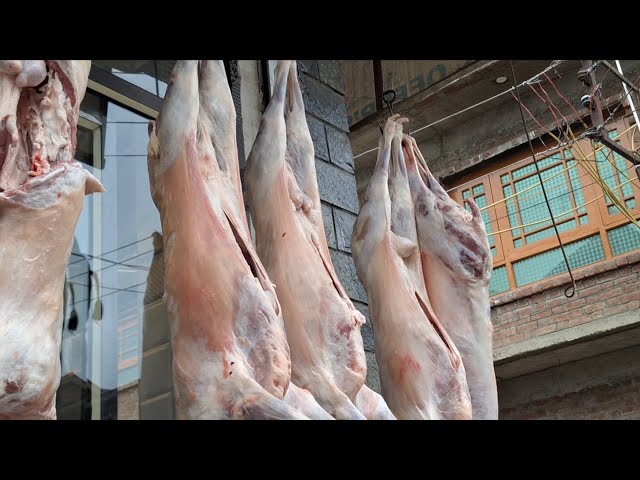Kashmir Introduces Graded Meat System: Consumers Now Have Pricing Options
In a significant move aimed at improving consumer choice and transparency, meat consumers in Kashmir can now purchase graded meat at varying prices. This new system, introduced by the local administration, categorizes meat into different grades based on quality, allowing consumers to make informed decisions while shopping.
The Grading System Explained
The newly implemented grading system divides meat into three categories:
- Super Grade A: Premium cuts sourced from young livestock weighing 13-15 kilograms. This grade is priced at ₹700 per kilogram and is typically reserved for special occasions like weddings.
- Standard Grade A: High-quality meat priced at ₹680 per kilogram, offering a balance between quality and affordability.
- Grade A with Offal: Includes 150 grams of offal, priced at ₹620 per kilogram, catering to rural communities and budget-conscious consumers.
This tiered pricing structure aims to address the diverse needs of Kashmir’s population while ensuring quality standards are maintained.
Consumer Reactions
While the initiative has been welcomed by some for its transparency, others have expressed concerns about rising meat prices. “The new system is a step forward in offering choice, but the prices are still high for the average household,” said Farooq Mir, a resident of Srinagar.
The introduction of graded meat comes amid growing frustration over inflation in essential commodities. Many consumers feel that the government’s decision to deregulate meat prices has left them vulnerable to market forces.
Market Dynamics and Challenges
The deregulation of meat prices in 2023 marked a turning point for Kashmir’s meat industry. The Union Territory administration instructed the Food Civil Supplies & Consumer Affairs Department to withdraw from regulating prices, effectively handing pricing power to the Mutton Dealers Union.
Khazir Muhammad Rigoo, a representative of the All Kashmir Butchers Union, defended the new pricing structure, emphasizing the quality distinctions between grades. “We’ve fulfilled our promise to prevent supply shortages and offer options for all consumers,” Rigoo stated.
However, critics argue that the lack of regulatory oversight could lead to unchecked price hikes, further burdening consumers already grappling with rising food costs.
A Step Towards Transparency
Despite the challenges, the graded meat system represents a step towards greater transparency in the meat market. By clearly defining quality standards and corresponding prices, the initiative aims to build trust between consumers and sellers.
As the system gains traction, it remains to be seen whether it will achieve its intended goals of improving consumer satisfaction and market efficiency.




